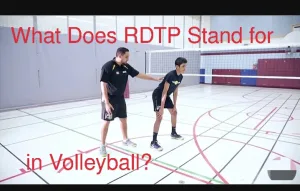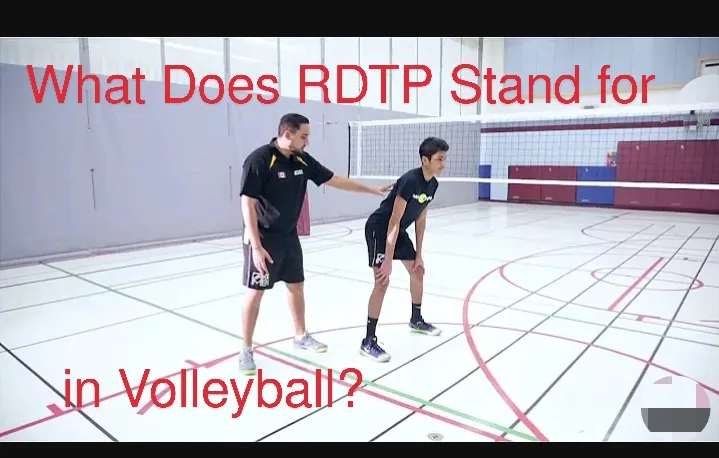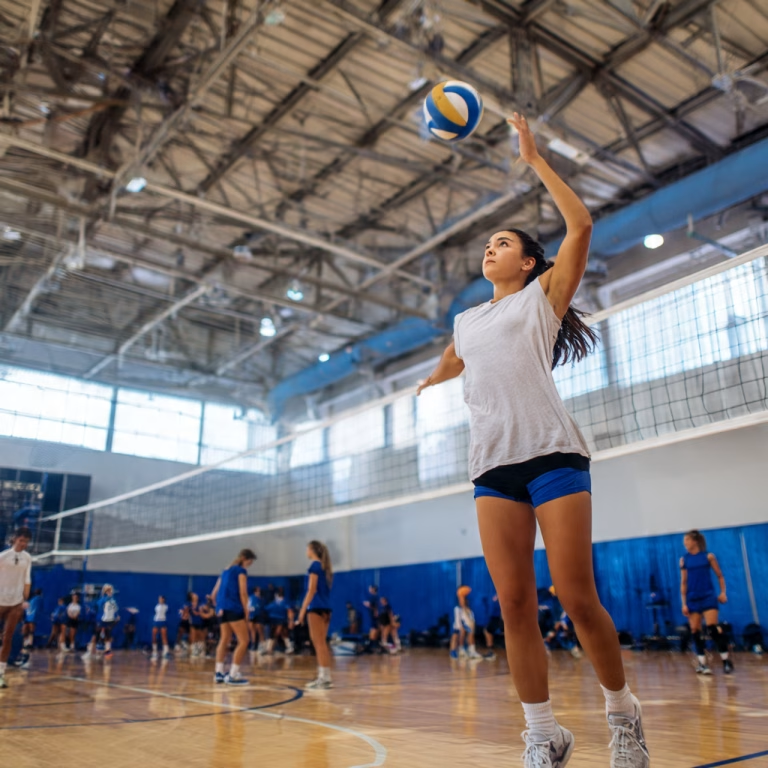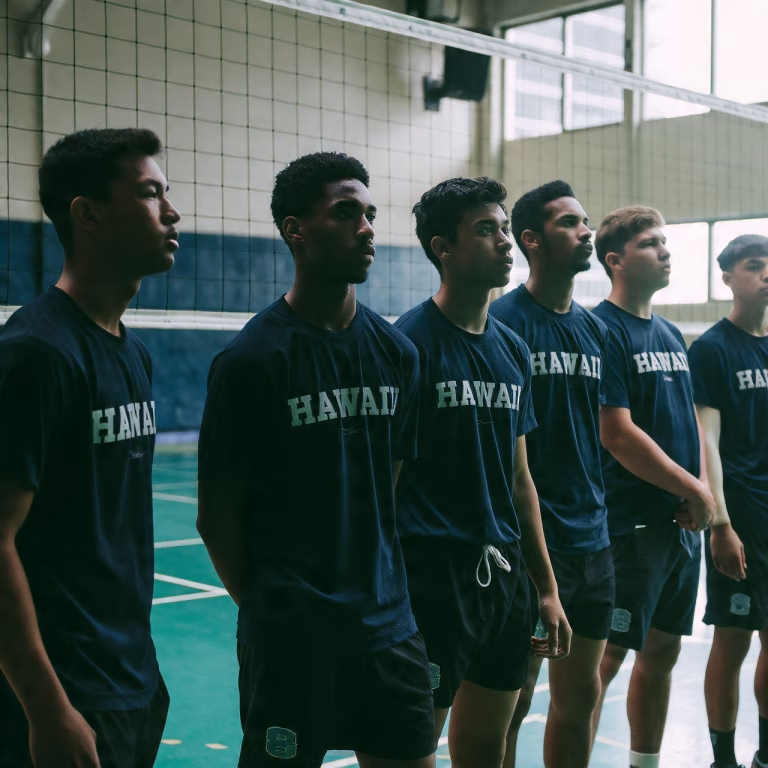What does RDTP stand for in volleyball?Well, volleyball is one of those sports with technical terms, words, acronyms, and jargon that can confuse newcomers or even seasoned players.
One term that frequently sparks curiosity is RDTP. If you’ve come across this term and wondered what it stands for in volleyball, you’re in the right place.
In this article, we’ll break down RDTP, explain its significance in the volleyball game, and provide context on its roles and usage in the volleyball world.
What Does RDTP Stand for in Volleyball?

In volleyball, RDTP stands for “Ready-to-Defend Position.” It’s a technical term that is used to describe the ideal body position and mindset players adopt when preparing to defend against an opponent’s attack.
This position is essential for successful defense, allowing players to react quickly to spikes, serves, and other offensive plays.
Why is RDTP Important in Volleyball?
The RDTP is a fundamental aspect of volleyball defense. It ensures that players are:
- Balanced and Stable: A proper stance keeps players grounded, making it easier to move in any direction.
- Quick to React: Being ready allows defenders to respond to fast-paced attacks or unexpected ball trajectories.
- Consistent in Execution: Adopting a standard defensive position minimizes errors and improves overall team performance.
Without the RDTP, players might struggle to defend effectively, leading to lost points or missed opportunities.
See Also: What Is the Average Work Environment for Pro Volleyball Players?
How to Adopt the Ready-to-Defend Position (RDTP)
Mastering RDTP requires understanding its key components. Here’s a step-by-step guide:
- Foot Positioning
Stand with your feet shoulder-width apart. Distribute your weight evenly on the balls of your feet to allow quick lateral movements.
- Knee Bend
Slightly bend your knees, keeping your body low. This posture provides stability and prepares you for explosive movements.
- Hand Placement
Keep your hands slightly in front of your body at waist height. Relax your fingers and wrists to easily absorb the ball’s impact when digging or receiving.
- Eyes on the Ball
Focus on the ball and anticipate the attacker’s move. Track the ball’s trajectory to position yourself correctly.
- Engaged Core
Maintain a strong core to support quick reactions and prevent overextension.
The Role of RDTP in Different Volleyball Scenarios
RDTP is not a one-size-fits-all concept. It varies slightly depending on the situation:
| Scenario | RDTP Adjustments |
| Serve Reception | Players position themselves to cover their zone and adjust based on the server’s style. |
| Blocking | Although blocking involves jumping, RDTP helps players position their feet correctly before the leap. |
| Defending a Spike | Players stay low and prepare to dive or dig the ball, focusing on the attacker’s arm movement. |
| Transition Plays | RDTP helps players move quickly from offense to defense without losing stability. |
RDTP and Defensive Techniques
RDTP forms the foundation for various defensive skills in volleyball, including:
- Digging
Digging involves retrieving hard-driven spikes or attacks. A proper RDTP ensures:
- Quick reflexes to react to fast spikes.
- Stability to absorb the impact of the ball.
- Blocking
While blocking primarily occurs at the net, RDTP aids blockers by providing a stable base to jump and align their hands with the ball.
- Rolling and Diving
Players often need to dive or roll to save difficult balls. RDTP allows for smooth transitions into these movements without losing balance.
See Also: What is a DS in Volleyball? Defensive Specialist Explained
Common Mistakes Players Make with RDTP
Even experienced players can sometimes falter in adopting the RDTP correctly. Here are some common errors and how to fix them:
| Mistake | Impact | Solution |
| Standing too upright | Slower reaction times and reduced mobility. | Bend your knees slightly and stay low. |
| Weight on heels | Difficulty moving quickly in any direction. | Shift weight to the balls of your feet. |
| Hands too high or too low | Ineffective for receiving balls. | Keep hands at waist level, relaxed. |
| Watching the player, not the ball | Misjudging ball trajectory. | Focus on the ball while tracking the attacker. |
How to Apply RDTP at Different Skill Levels
Whether you’re a beginner or an advanced player, mastering RDTP is essential. Here’s how it applies across different skill levels:
RDTP For Beginners Level
- Focus on developing the habit of staying in a low, ready position during play.
- Practice basic footwork drills to improve mobility.
RDTP for Intermediate Level Players
- Work on transitioning from RDTP into digging or diving techniques.
- Learn to read the attacker’s movements to anticipate their plays.
RDTP for Advanced Level Players
- Refine RDTP to suit specific game situations, such as defending quick sets or powerful spikes.
- Combine RDTP with advanced strategies like rotation defense or perimeter defense.
Drills to Improve RDTP
Practicing RDTP regularly is key to making it second nature. Here are a few drills to help:
- Shadow Defense
- Move laterally across the court in RDTP while simulating defensive movements.
- Focus on maintaining balance and quick transitions.
- Reaction Drill
- Have a coach or teammate randomly toss balls to different areas of the court.
- Stay in RDTP and react quickly to retrieve the ball.
- Mirror Drill
- Pair up with a teammate and mimic their movements while staying in RDTP.
- This helps improve agility and reaction time.
See Also: Where Can I Get My Volleyball Pumped for Free?
FAQs About RDTP in Volleyball
Is RDTP only for back-row players?
No. While back-row players often use RDTP for defense, front-row players also adopt this position when preparing to block or defend tips.
Can RDTP improve my reaction time?
Yes. RDTP puts you in an optimal position to react quickly to fast-paced plays.
How do I know if I’m doing RDTP correctly?
Check your balance, knee bend, and hand positioning. You should feel stable yet ready to move in any direction.
Is RDTP necessary for casual volleyball games?
While not mandatory, using RDTP in casual games can improve your skills and help you enjoy the sport more.
Can children learn RDTP?
Absolutely. Teaching RDTP to young players sets a strong foundation for their defensive skills as they advance in the sport.
Conclusion
RDTP stands for “Ready-to-Defend Position.” By understanding and practicing RDTP, you’ll enhance your defensive skills, improve your reaction time, and contribute more effectively to your team.
If you have more questions about RDTP or volleyball techniques, feel free to leave a comment in the comment section below.
See Also: When Is Volleyball Season?




